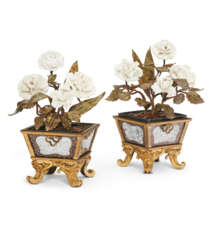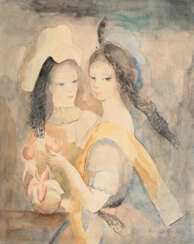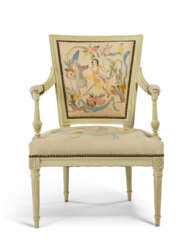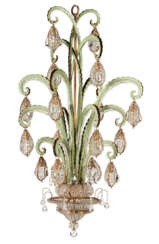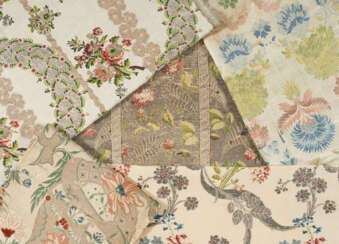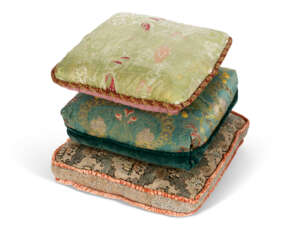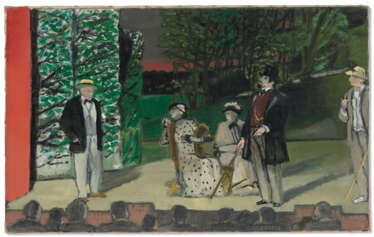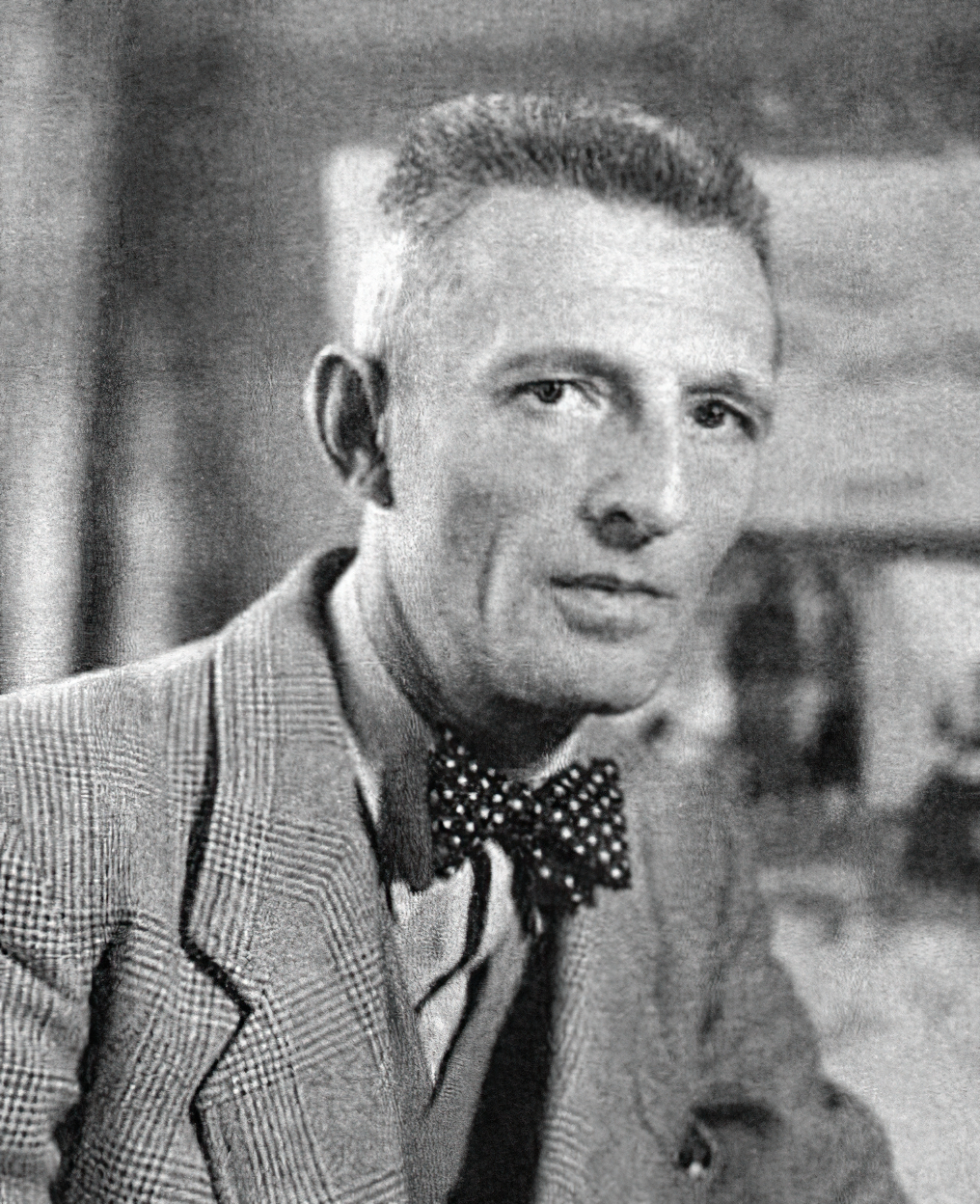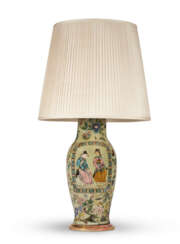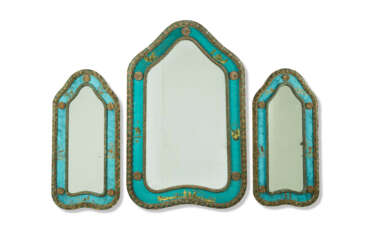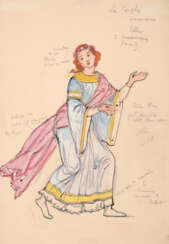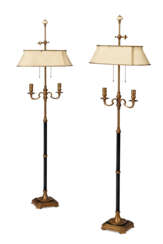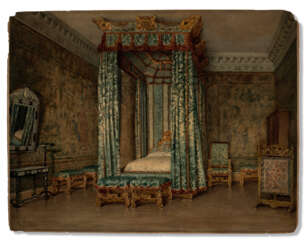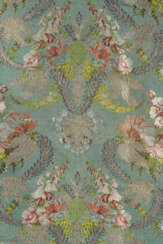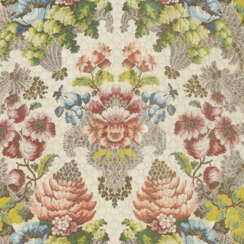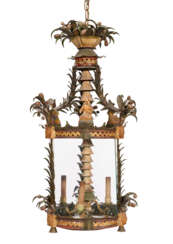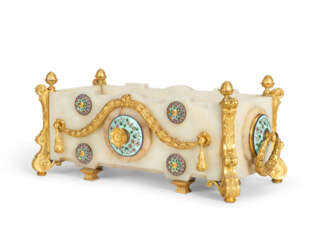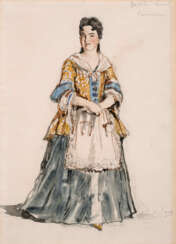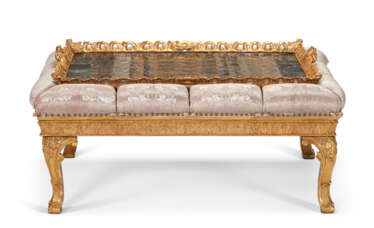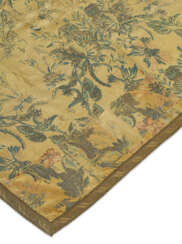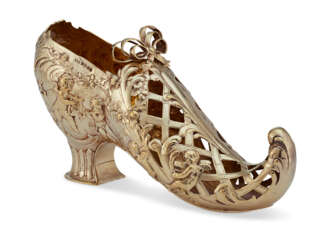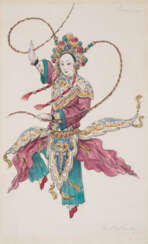
The Ann & Gordon Getty Collection: Decorations, Furniture, Lighting and Objects
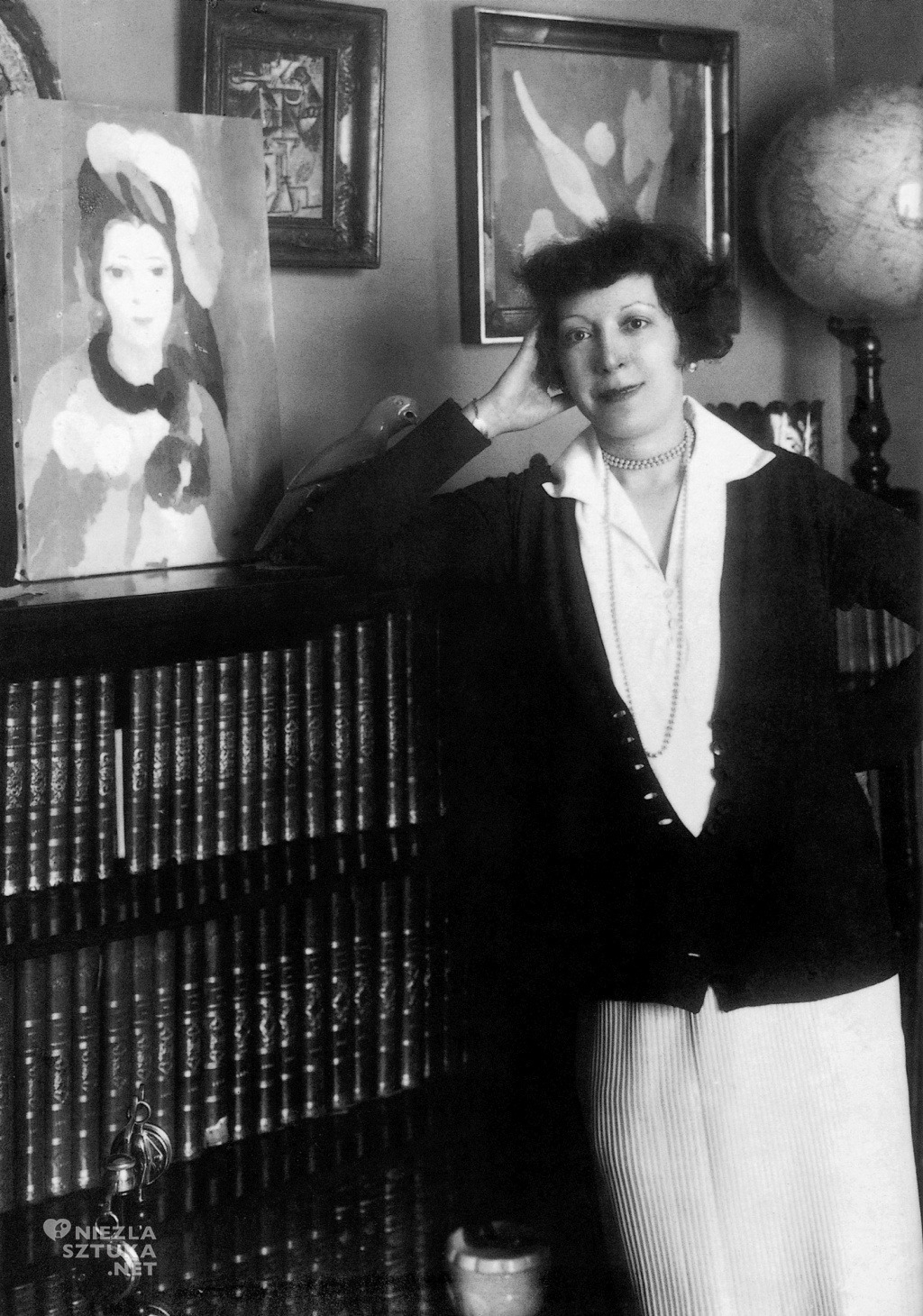
Marie Laurencin was a pivotal figure in the Parisian avant-garde, a French artist renowned for her distinct approach to painting. Unlike her contemporaries who embraced the bold facets of Cubism, Laurencin carved a niche for herself with a palette of soft pastels and a focus on ethereal female forms. Her work, embodying an enchanted, feminine world devoid of masculine presence, was revolutionary for its time, offering a sanctuary of female harmony that was both subtle and profound.
Laurencin's oeuvre extends beyond paintings to include watercolors, drawings, and prints, with notable works such as "Les jeunes filles" and "Portrait de Mademoiselle Chanel" finding homes in prestigious institutions like the Museum of Modern Art in New York and the Musée de l'Orangerie in Paris. Her legacy is further cemented by the Musée Marie Laurencin in Nagano, Japan, the only museum dedicated solely to a female painter, showcasing over 600 of her pieces.
Her approach diverged significantly from the norms of Cubism, incorporating a distinctly feminine aesthetic through the use of pastel colors and curvilinear forms. This unique style set her apart from peers and positioned her as one of the few female Cubist painters, alongside figures like Sonia Delaunay and Marie Vorobieff. Laurencin's artistry was not just an exploration of femininity but a celebration of it, challenging the dominant artistic narratives of her time.
The critique of Laurencin's work for its deliberate embrace of femininity and decorative qualities overlooks the radical essence of her aesthetic. Her paintings, characterized by serene and charming depictions of women, argue for a creative space where the feminine is not just visible but central. Works like "The Fan" and "Spanish Dancers" exemplify her ability to create intimate, self-sufficient worlds that engage the viewer in narratives of absence, longing, and female solidarity.
For collectors and experts in art and antiques, Laurencin's work offers a nuanced understanding of early 20th-century modern art movements through the lens of femininity. Her contributions to art history reflect a bold reimagining of the female form and the spaces women occupy, both in the physical and imaginative realms.
To stay informed about new product sales and auction events related to Marie Laurencin, sign up for updates. This subscription ensures you remain at the forefront of the latest developments and opportunities to acquire works by this groundbreaking artist.

Marie Laurencin was a pivotal figure in the Parisian avant-garde, a French artist renowned for her distinct approach to painting. Unlike her contemporaries who embraced the bold facets of Cubism, Laurencin carved a niche for herself with a palette of soft pastels and a focus on ethereal female forms. Her work, embodying an enchanted, feminine world devoid of masculine presence, was revolutionary for its time, offering a sanctuary of female harmony that was both subtle and profound.
Laurencin's oeuvre extends beyond paintings to include watercolors, drawings, and prints, with notable works such as "Les jeunes filles" and "Portrait de Mademoiselle Chanel" finding homes in prestigious institutions like the Museum of Modern Art in New York and the Musée de l'Orangerie in Paris. Her legacy is further cemented by the Musée Marie Laurencin in Nagano, Japan, the only museum dedicated solely to a female painter, showcasing over 600 of her pieces.
Her approach diverged significantly from the norms of Cubism, incorporating a distinctly feminine aesthetic through the use of pastel colors and curvilinear forms. This unique style set her apart from peers and positioned her as one of the few female Cubist painters, alongside figures like Sonia Delaunay and Marie Vorobieff. Laurencin's artistry was not just an exploration of femininity but a celebration of it, challenging the dominant artistic narratives of her time.
The critique of Laurencin's work for its deliberate embrace of femininity and decorative qualities overlooks the radical essence of her aesthetic. Her paintings, characterized by serene and charming depictions of women, argue for a creative space where the feminine is not just visible but central. Works like "The Fan" and "Spanish Dancers" exemplify her ability to create intimate, self-sufficient worlds that engage the viewer in narratives of absence, longing, and female solidarity.
For collectors and experts in art and antiques, Laurencin's work offers a nuanced understanding of early 20th-century modern art movements through the lens of femininity. Her contributions to art history reflect a bold reimagining of the female form and the spaces women occupy, both in the physical and imaginative realms.
To stay informed about new product sales and auction events related to Marie Laurencin, sign up for updates. This subscription ensures you remain at the forefront of the latest developments and opportunities to acquire works by this groundbreaking artist.
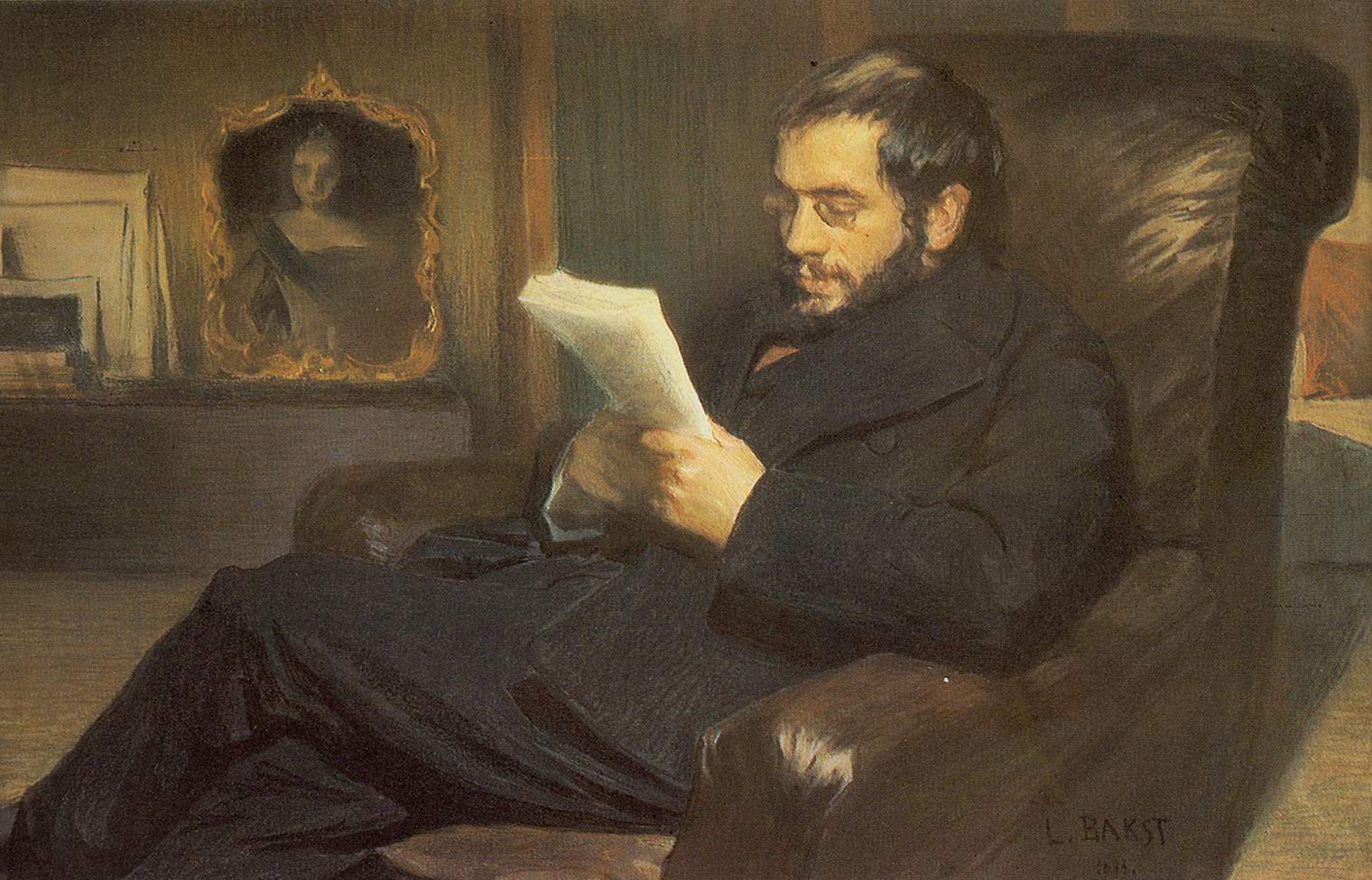
Alexandre Nikolayevich Benois (Russian: Алекса́ндр Никола́евич Бенуа́) was a distinguished Russian artist, art critic, and historian, celebrated for his pivotal role in the art world, particularly in painting and stage design. Born into a family deeply embedded in the cultural fabric of Russia, Benois was instrumental in the development of the Russian artistic movement at the turn of the 20th century. His contributions to art and culture extend beyond his vivid paintings; he was a founding member of the World of Art (Mir iskusstva), a significant art movement and magazine that sought to elevate Russian artistry on the global stage.
Benois' work is notable for its intricate detailing, vibrant use of color, and the ability to convey deep narratives within each piece. His designs for ballets such as "Petrushka" and "The Sleeping Beauty" remain iconic, showcasing his mastery over the fusion of visual art and performance. This synthesis not only enhanced the ballets’ visual appeal but also deepened the audience's engagement with the narrative. Museums and galleries around the world, including the Russian Museum in St. Petersburg and the Tretyakov Gallery in Moscow, house his works, underscoring his global recognition and the enduring appeal of his artistic vision.
For collectors and experts in art and antiques, Benois' oeuvre represents a fascinating exploration of early 20th-century Russian culture, art, and the avant-garde movement. His ability to blend traditional Russian themes with the modernist trends of his time makes his work a valuable study in the evolution of modern art. Those interested in the rich tapestry of Russian cultural history and the interplay between art and performance will find Benois' contributions invaluable.
To stay informed about new discoveries, sales, and auction events related to Alexandre Nikolayevich Benois, we encourage you to sign up for updates. This subscription is tailored specifically for enthusiasts eager to deepen their appreciation and understanding of Benois' legacy, ensuring you're the first to know about opportunities to acquire pieces connected to this luminary of Russian art.

Alexandre Nikolayevich Benois (Russian: Алекса́ндр Никола́евич Бенуа́) was a distinguished Russian artist, art critic, and historian, celebrated for his pivotal role in the art world, particularly in painting and stage design. Born into a family deeply embedded in the cultural fabric of Russia, Benois was instrumental in the development of the Russian artistic movement at the turn of the 20th century. His contributions to art and culture extend beyond his vivid paintings; he was a founding member of the World of Art (Mir iskusstva), a significant art movement and magazine that sought to elevate Russian artistry on the global stage.
Benois' work is notable for its intricate detailing, vibrant use of color, and the ability to convey deep narratives within each piece. His designs for ballets such as "Petrushka" and "The Sleeping Beauty" remain iconic, showcasing his mastery over the fusion of visual art and performance. This synthesis not only enhanced the ballets’ visual appeal but also deepened the audience's engagement with the narrative. Museums and galleries around the world, including the Russian Museum in St. Petersburg and the Tretyakov Gallery in Moscow, house his works, underscoring his global recognition and the enduring appeal of his artistic vision.
For collectors and experts in art and antiques, Benois' oeuvre represents a fascinating exploration of early 20th-century Russian culture, art, and the avant-garde movement. His ability to blend traditional Russian themes with the modernist trends of his time makes his work a valuable study in the evolution of modern art. Those interested in the rich tapestry of Russian cultural history and the interplay between art and performance will find Benois' contributions invaluable.
To stay informed about new discoveries, sales, and auction events related to Alexandre Nikolayevich Benois, we encourage you to sign up for updates. This subscription is tailored specifically for enthusiasts eager to deepen their appreciation and understanding of Benois' legacy, ensuring you're the first to know about opportunities to acquire pieces connected to this luminary of Russian art.

Alexandre Nikolayevich Benois (Russian: Алекса́ндр Никола́евич Бенуа́) was a distinguished Russian artist, art critic, and historian, celebrated for his pivotal role in the art world, particularly in painting and stage design. Born into a family deeply embedded in the cultural fabric of Russia, Benois was instrumental in the development of the Russian artistic movement at the turn of the 20th century. His contributions to art and culture extend beyond his vivid paintings; he was a founding member of the World of Art (Mir iskusstva), a significant art movement and magazine that sought to elevate Russian artistry on the global stage.
Benois' work is notable for its intricate detailing, vibrant use of color, and the ability to convey deep narratives within each piece. His designs for ballets such as "Petrushka" and "The Sleeping Beauty" remain iconic, showcasing his mastery over the fusion of visual art and performance. This synthesis not only enhanced the ballets’ visual appeal but also deepened the audience's engagement with the narrative. Museums and galleries around the world, including the Russian Museum in St. Petersburg and the Tretyakov Gallery in Moscow, house his works, underscoring his global recognition and the enduring appeal of his artistic vision.
For collectors and experts in art and antiques, Benois' oeuvre represents a fascinating exploration of early 20th-century Russian culture, art, and the avant-garde movement. His ability to blend traditional Russian themes with the modernist trends of his time makes his work a valuable study in the evolution of modern art. Those interested in the rich tapestry of Russian cultural history and the interplay between art and performance will find Benois' contributions invaluable.
To stay informed about new discoveries, sales, and auction events related to Alexandre Nikolayevich Benois, we encourage you to sign up for updates. This subscription is tailored specifically for enthusiasts eager to deepen their appreciation and understanding of Benois' legacy, ensuring you're the first to know about opportunities to acquire pieces connected to this luminary of Russian art.
